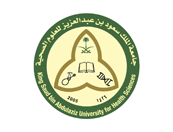Abstract
Purpose: Self-explanation (SE) has been shown to support the development of diagnostic reasoning in medical students. However, no study has documented how SE influences the development of the knowledge that underpins this reasoning. This study was a first step to explore this. More specifically the aim was to compare the use of biomedical and clinical knowledge by medical students who use SE while solving the same clinical cases one week apart. Methods: Fifty-three medical clerks previously took part in a study to determine the impact of combining SE with listening to examples of SE on solving clinical cases one week later. In the present study, the authors analyzed the SE verbatim of the 15 students in the control group, who only used SE while solving cases. Four cases per participant were analyzed, for a total of 60 transcribed SE recorded at two different times, one week apart (T1 and T2), and for two clinical cases. The verbatim transcripts were coded according to a pre-determined coding grid: paraphrases, clinical inferences, biomedical inferences, monitoring, and errors. Code frequencies were compared at T1 and T2 using a paired t-test. Results: No significant difference between the two times in any of the categories: clinical inferences (p¼0.28), biomedical inferences (p¼0.08), paraphrases (p¼0.97), monitoring (p¼0.60), and errors (p¼0.65). Discussion: Our results did not show quantitative changes of biomedical or clinical knowledge expressed by students using SE when tested at one week interval. The level of students and the short observation period may explain the negative findings. Alternatively, the assumption that knowledge transformation could be captured by simple quantitative measures might be too simplistic. To document and qualify the effects of SE on the medical knowledge, future studies will need to combine different instruments and/or observe its development over a longer period of time.
Recommended Citation
Muhoza-Butoke, Christian; St-Onge, Christina; and Chamberland, Martine
(2018)
"Self-Explanation as a Strategy for Supporting the Development of Diagnostic Reasoning in Medical Students: An Exploratory Study on Knowledge Development,"
Health Professions Education: Vol. 4:
Iss.
2, Article 3.
DOI: 10.1016/j.hpe.2017.03.005
Available at:
https://hpe.researchcommons.org/journal/vol4/iss2/3



